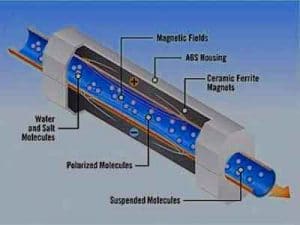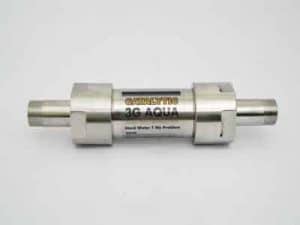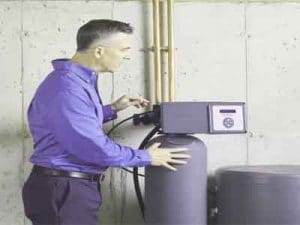What is a Water Softener?
A water softener is a household appliance that is used to treat hard water. Hard water contains high levels of minerals, such as magnesium and calcium, which can cause problems in the home. These minerals can leave behind deposits on fixtures and appliances, and can also cause skin irritation. A water softener uses a process called ion exchange to remove these minerals from the water. The softener replaces the hard ions with softer ions, such as sodium or potassium. This results in softened water, which is free from scale build-up and skin irritation.
How Long Does A Water Softener Last?
Water softeners are devices used to treat hard water by removing minerals such as calcium and magnesium. Hard water can cause a variety of problems, including scaling on pipes and appliances, reduced efficiency of appliances, and decreased soap efficacy. A water softener can last anywhere from 5 to 10 years, depending on the quality of the unit and the amount of use it receives.
To get the most life out of your water softener, be sure to have it serviced regularly. A professional will be able to clean and inspect the unit, making any necessary repairs or replacements. Additionally, keep an eye on the level of salt in the brine tank; if it gets too low, the softener may not work properly. Water softeners are an important part of any home’s water filtration system. If you want to be sure that your family is drinking safe, clean water, it’s important to invest in a good unit and keep it serviced regularly.
Types of water softeners:
There are many types of water softeners on the market. The most popular type of water softeners are listed below:
-
Magnetic water softeners:

Water softeners are a popular appliance in many homes, and there are a variety of different types available on the market. One type of water softener is the magnetic water softener. A magnetic water softener uses magnets to remove hardness from the water. The magnets create a field that attracts the minerals in the water and causes them to clump together so they can be filtered out.
Some people believe that magnetic water softeners are more effective than traditional salt-based water softeners, but there is no scientific evidence to support this claim. Magnetic water softeners are also more expensive than traditional salt-based systems.
There are a few things to consider before purchasing a magnetic water softener. First, it is important to determine how much hardness is in your water. Second, you need to make sure that your home’s plumbing can accommodate a magnetic system.
-
Catalytic water softeners:

A catalytic water softener is a type of water softener that uses a catalyst to remove minerals from water. The catalyst in a catalytic water softener is typically a piece of activated carbon.
Activated carbon is porous, which means it has lots of small spaces between the atoms in its molecules. These spaces can adsorb (stick to) certain molecules. In a catalytic water softener, the activated carbon adsorbs minerals such as calcium and magnesium from the water.
The activated carbon in a catalytic water softener also acts as a catalyst. A catalyst speeds up a chemical reaction without being consumed by the reaction. In a catalytic water softener, the activated carbon speeds up the process of removing minerals from the water.
-
Saltless water softeners:
Water softeners are often a necessary appliance in households with hard water. Hard water contains high levels of minerals, specifically calcium and magnesium, that can cause problems in appliances and plumbing. A water softener removes these minerals from the water, making it softer and less likely to cause damage.
There are two main types of water softeners: salt-based and saltless. Salt-based softeners use a mineral called sodium chloride, or salt, to remove the hardness from the water. Saltless softeners use an electronic process to remove the hardness from the water without using any salt.
Salt-based softeners are generally more effective than saltless softeners at removing hardness from the water. However, saltless softeners do not use any salt, which can be a benefit for those who are trying to reduce their sodium intake.
-
Softening hard water:
Water softeners are the household appliance that is used to soften hard water. Hard water is water that has minerals, such as calcium and magnesium, dissolved in it. These minerals can cause problems in the home, such as clogged pipes and appliances. A water softener removes these minerals from the water, making it softer.
How long a water softener lasts depends on how often it is used and the type of salt that is used in it. If the water softener is used regularly, it will last around 10 years. If it is only used occasionally, it may last up to 15 years. The type of salt also affects how long the water softener lasts. If regular table salt is used, the water softener will last around 5 years.
-
Salt-free water softeners
Salt-free water softeners are a great alternative for people who don’t want to use salt to soften their water, but they also come with a few downsides. One downside is that salt-free softeners don’t work as well as regular water softeners and they can’t be used with wells that have high levels of iron or manganese. Salt-free softeners are also more expensive than regular softeners.
-
Ion-exchange water softeners:
Ion exchange water softeners are devices that are used to remove minerals, such as calcium and magnesium, from hard water. These devices work by passing water through a resin bed that is filled with small beads. The beads are covered in a positively charged layer of resin. As the hard water passes through the resin bed, the minerals attach to the positive resin and are removed from the water.
There are two main types of ion exchange water softeners: salt-based and salt-free. Salt-based systems use a small amount of salt to help regenerate the resin beads. Salt-free systems use a special electronic device to generate a magnetic field that attracts the minerals and removes them from the water.
Both types of systems have their pros and cons. Salt-free systems are generally less expensive than salt systems, but they require more maintenance and replacement of the resin beads. Salt systems have a longer life span, but they can be more costly in the long run.
How a water softener works:
A water softener is a device that removes the minerals from hard water. The most common minerals are magnesium and calcium. A water softener does this by exchanging the hard water with a softer type of water. There are two types of water softeners, salt-based and salt-free. The way a salt-based water softener works is by adding salt to the tank. This makes the hard water pass through a resin bed which traps the minerals. The softened water then flows out of the tank and into your home’s pipes. Salt-free water softeners use a technology called zeolite to soften the water. Zeolite is a mineral that absorbs the hardness minerals in the water.
The Average Lifespan of a Water Softener
Water softeners are a popular item in many homes for good reason: they make life easier. By filtering out minerals like calcium and magnesium from the water, they make it so soap and other cleaning products can work more effectively and your home stays cleaner. But how long do they last?
The average lifespan of a water softener is around 10 years. However, this number can vary depending on the brand, quality, and type of softener you have. Some models need to be replaced every few years while others can last up to 15 or 20 years.
One way to help extend the life of your water softener is to properly maintain it. Make sure you regularly clean the filter and replace any parts that might wear down over time. Also, keep an eye on the salt level in the tank – if it gets too low, it can damage the unit.
Signs That It’s Time to Replace Your Water Softener
If your water softener is older than 10 years, it may be time for a replacement. Signs that it’s time to replace your water softener include a decrease in water pressure, increase in water usage, and rust or scale build-up. It’s also important to regularly maintain your water softener by flushing the tanks and lines and replacing the salt. If you’re not sure whether it’s time for a replacement, contact a professional to help evaluate your system.
How to choose the right water softener:
When it comes time to purchase a water softener, there are a few things you need to take into account. The size of your household, the hardness of your water, and your budget are all important factors when choosing the right softener.
The size of your household will determine how large of a unit you need. If you have a small household, a residential-sized unit should work just fine. If you have a large household, you may need a commercial-sized unit.
The hardness of your water is another factor to consider when purchasing a water softener. If you have very hard water, you will need a more powerful unit to remove all the minerals. A unit that is too weak for your water’s hardness level may not work properly and could end up costing you more in the long run.
How to install a water softener:
The lifespan of a water softener can depend on the amount of water hardness and the size of the unit. Generally, a water softener will need to be replaced every 7-10 years. However, this can vary depending on how often the unit is used and how well it is maintained.
To install a water softener, first, find the main water line entering your home. The inlet pipe will be either copper or PVC plastic and is typically about 1″ in diameter. Shut off the main water supply and attach the garden hose to the inlet pipe. Open up the faucet nearest to the softener to let any air escape.
Next, connect the other end of the garden hose to the outlet pipe on top of the softener. The outlet pipe will be either copper or plastic and is typically about 2″ in diameter.
Now that the softener has been installed, turn on the water supply and check to ensure there are no leaks.
How to maintain a water softener:

Maintaining a water softener is important to ensure that it continues to work properly and remove minerals from the water. A water softener should be flushed every few months to remove any built-up sediment or particles. The brine tank should also be cleaned regularly to remove any calcium deposits. If these steps are not taken, the water softener may not function correctly and could eventually need to be replaced.
How long do the resin beads last in a water softener?
Water softeners use resin beads to remove minerals from water. The resin beads eventually become saturated with minerals and need to be replaced. How long the resin beads last depends on the hardness of the water and how often the softener is used. In general, the resin beads will last for several years if the water is moderately hard and the softener is used regularly. If the water is very hard or if the softener is not used often, the resin beads may need to be replaced every year or two.
How to tell if the water softener is bad?
A water softener is a device that is used to remove minerals from water. These minerals can include calcium and magnesium. These minerals can cause several problems in the home, including clogged pipes and appliances. A water softener can last for many years if it is properly maintained. There are a few things that you can look for to determine if your water softener is bad.
The first thing to look for is leaks. If the water softener is leaking, it will not be able to function properly. The next thing to look for is corrosion. If the water softener is corroded, it will not be able to work correctly. Finally, you should check the salt levels in the tank. If the salt levels are too low, the water softener will not be able to function properly.
How long do Culligan water softeners last?
Culligan water softeners are a popular choice for homeowners looking to improve the quality of their water. But how long do they last?
The lifespan of a Culligan water softener can vary depending on the model and the amount of use it receives. However, most Culligan water softeners last around 10 years.
It’s important to remember that a Culligan water softener is only as good as its filter. If the filter isn’t changed regularly, the softener won’t work as well and may not last as long.
To get the most out of your Culligan water softener, be sure to change the filter regularly and give it regular maintenance.
How long does a water softener take to regenerate?
A water softener typically takes about two hours to regenerate. This means that the water passing through the softener will be free of minerals for about eight hours. During regeneration, the brine tank will fill with saltwater and the resin beads in the tank will release sodium ions. These ions will replace the calcium and magnesium ions that were removed from the water during the previous cycle.
How often to replace water softener salt?
Water softener salt should be replaced every few months, depending on the hardness of your water and how often the system is used. If you have a water softener in your home, it’s important to replace the salt regularly to ensure its effectiveness. If you don’t replace the salt, the softener will eventually stop working and you’ll need to replace it altogether.
